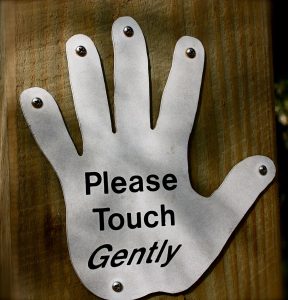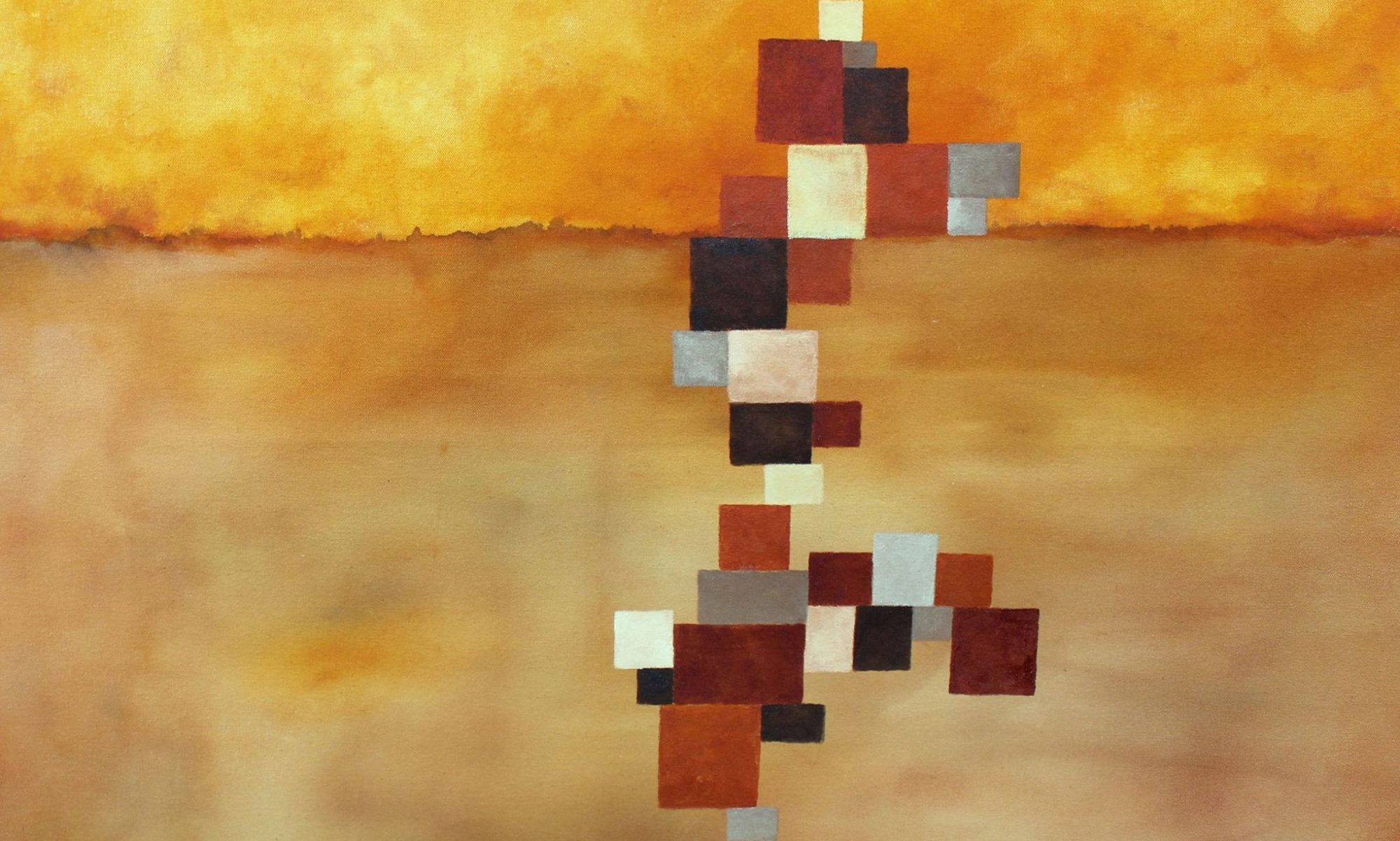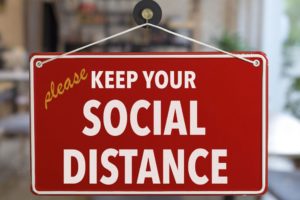Brian Treanor is currently Professor of Philosophy Department and Charles S. Casassa SJ Chair in Social Values at Loyola Marymount University, in Los Angeles. He writes and teaches on a diverse range of issues including hermeneutics, environmental philosophy, ethics, and philosophy of religion. He was the editor, with Richard Kearney, of Carnal Hermeneutics (Fordham 2015), a collection that makes the case that hermeneutics goes “all the way down” to our senses and perceptions, that our carnal sensations are already interpretations. Additional projects include Melancholic Joy: On Life Worth Living (Bloomsbury 2021), Philosophy in the American West: A Geography of Thought (Routledge 2020), Being-in-Creation: Human Responsibility in an Endangered World (Fordham 2015), and Emplotting Virtue (SUNY 2014), among others.
***
In in a series of recent blog postings on Hermeneutical Movements, David Utsler makes the case that the reaction to the COVID-19 pandemic highlights a number of issues relevant to hermeneutics. He is certainly right in doing so, particularly in light of the “material turn” that has gained traction in many philosophical sub-fields in recent years.
In the following, I want to engage David’s insightful posts, and to contribute in some small way to reflection on the COVID-19 pandemic and our response to it.
Carnal Hermeneutics and COVID-19
David points out that while the COVID-19 pandemic presents a challenge to our thinking in various ways, it focuses our attention on touch with particular clarity. As there is, currently, no effective vaccine or treatment for COVID-19, we are left with nothing to fall back on other than good, basic public health responses, including now-ubiquitous efforts at “social distancing.” This term and its many associations draw our attention, as David points out, to our shared social spaces and how we inhabit them. As the pandemic gained speed and governments struggled to respond, we were regularly reminded to maintain a two-meter distance between ourselves and others, and almost as regularly reminded that “social distancing” is a misnomer (though too late, I fear, as “social distancing” is now fixed in the shared lexicon of the generations who will remember this pandemic). The real point is to engage in “physical distancing” and, in particular, to become aware of touch. We were reminded not to touch others—dropping handshakes for “elbow bumps” and then, realizing even those were too “touchy,” adopting bows, nods or other inclinations of the head, and eventually waves from a strictly-maintained two-meter distance.
But the two-meter bubble of social distancing is only part of our new “sensitivity” to touching and being touched. Others can “touch” us by using door handles or light switches or shopping carts immediately before we do. We’ve become anxious about touch even at the level of proprioception, intensely aware of how often we touch our faces to scratch our nose or rub our eyes. Comically, though understandably, early during the US outbreak I watched official after official touch his or her face during interviews and press conferences, culminating with a health official in California licking her finger to turn the pages of her notes shortly after advising us not to touch our faces.
The rehabilitation of touch has been a particular concern for thinkers associated with “carnal hermeneutics.” In fact, Richard Kearney, who co-edited Carnal Hermeneutics with me, has just finished a book on this very topic: Touch (New York: Columbia University Press, 2021). As David notes, all sensate experience is an interpretation, something demonstrated with abundant clarity by thinkers as diverse as Aristotle, Merleau-Ponty, and Shusterman. Nevertheless, the history of hermeneutics—and, indeed, of philosophy—is one in which the body and the senses are downplayed or denigrated in favor of the mind/soul and reason/language. It is for this reason that I have been arguing for some time that we need to articulate a hermeneutics “beyond the metaphor of the text.”
Touch
What makes touch distinctive among the senses?
Many things to be sure; but, from the perspective of carnal hermeneutics, the distinction cannot be that touch is immediate while the other senses are mediated. All our experience, including sensuous experience, is mediated to one degree or another. Just as sight is not direct communion with that which is seen, or hearing direct communion with that which is heard, touch remains at a distance from that which is touched. Kearney reminds us that, in the De Anima, Aristotle tells us that touch does have a medium: flesh (sarx). “Flesh,” writes Aristotle, “is not the organ but the medium of touch.” There is a gap between touch and its objects, just as there is with the other senses; whence the need for and virtue of hermeneutics. Sensuous perception shares an “experiencing as” structure in common with other, more traditional forms of hermeneutics expressed in terms of the interpretation of texts. Touch does not provide a magical, direct access to the essence of things any more than does vision, or, for that matter, than the logos for which vision has traditionally been an analog. Of course, in another register, we could call into question the supposed remove of sight, smell, and the other senses from touch; sight takes place because photos strike the rods and cones on the retina, smell takes place because molecules come to rest on olfactory receptors, and so on (on this, see chapter 1 of Kearney’s forthcoming Touch).
Nevertheless, while touch may be mediated, we do have a feeling that it is, so to speak, “more direct.” Why is this so? Perhaps, because as Utsler points out, in touch we experience “resistance” in a distinctive way.
Touch is “reversible” in a way that other senses are not. We can see without being seen, hear without being heard; but we cannot touch without, at the same time, being touched. Precisely because touch is uniquely reversible in this way, when we touch, reality “pushes back” against us in a way that is different from the other senses, and certainly different from linguistic description or conceptual analysis. To touch something is to feel oneself being touched, to feel the resistance of that which is touched, to feel reality assert itself and push back against us. This resistance is emblematic of what Michel Serres calls “hard reality.” “Hard” reality goes by a variety of names in different thinkers: the given, nature, the wild. In general, hard reality is reality that resists us and makes demands on us, reality to which we must accommodate ourselves. “Soft” reality, in contrast, is reality as interpreted or experienced by us: culture, language, and so on. It is reality as bent to fit or accommodate us. Serres does not intend to set up a dualism of the hard and the soft, because there is, in the end, only one reality. Nevertheless, reality—a mixed bricolage of diverse phenomena—can and does present itself in harder or softer aspects, and we experience it in harder or softer ways. The point is to be able to travel between these different aspects of reality and translate responsibly.
Read in a phenomenological and hermeneutic register, one might take Serres to offer a kind of friendly amendment to the traditional phenomenological rallying call “to the things themselves,” which is this: “remember the hard.” That is to say, when we seek to return to the things themselves, which is to say the way that things are given to us in experience, remember the distinction between reality and our experience of it. Recognize, but do not overemphasize, the human role in the construction of the world. Remember the resistance of things to human experience, interrogation, analysis, and understanding. Remember the existence of things outside of and independent of human concern. Remember the wild heart of reality and the inhuman expanse of the cosmos and of deep time. Indeed, SARS-CoV-2 and COVID-19 are themselves manifestations of the hardness of reality: unforeseen, unwanted, and (at least so far) unsolvable disruptions to our all-too-human desires, goals, and plans. Until we find a vaccine, this is reality to which we must accommodate ourselves. A stark reminder that despite our wealth and power and technological might, our achievements are always at risk of being reduced to “two vast and trunkless legs of stone” among the vast, level cosmic sands.
One of the virtues of carnal hermeneutics is the way in which it gives us alternative metaphors with which to understand the core hermeneutic insight that we always experience, interpret, know, imagine, and understand from a particular perspective; and that while we our perspective can evolve or change, the root fact of having-a-perspective is something we can never escape. This is critical, because if hermeneutics tells us anything it is that every perspective reveals some things and conceals others. Thus, to view reality as a “book” to be “read” will reveal certain truths, and it has; it’s been one of the most fruitful epistemological metaphors of the 20th and early 21st century. But that same perspective will also conceal other truths, some of which will be more easily accessible if we consider reality not as a book to be read, but rather as something to be “held” or “embraced,” or a “banquet” to be “tasted,” or a “landscape” to be “traversed.” These alternative metaphors are not merely different modes of expression or variations in pedagogy, alternatives that are useful because some people are bookish and others are gourmets or saunterers. They are alternative ways of conceiving of and experiencing the world, alternatives that express the perspectival, partial, biased, revisable nature of our experience, perception, and understanding, alternatives that reveal and conceal different truths about the world and about ourselves.
Seen in this light, both during the pandemic and in whatever post-pandemic world we craft, we should be concerned not only with “the stories that we tell,” but also with places we inhabit and the ways in which we are oriented within them, the activity (or inactivity) of our bodies and the ways in which they interact with the world, the things we touch (and are touched by) and those we keep at arm’s length.
Getting in Touch with a Post-Pandemic World
When the pandemic really got under way, people—at least those who could do so—went online. The effects of the digital divide during the pandemic will be well worth analyzing at some point. But what interests me here is the attempt to “keep living” by “moving online.” Virtual classrooms. Virtual barstools. Virtual relationships (professional, amicable, and romantic). Virtual church. Virtual weddings and, sadly, funerals. Virtual bedside comfort for the dying, and virtual life for the living.
What, asks Utsler, will be the effects of physical distancing on the social relationships that normally sustain us through face-to-face, body-to-body interactions? How will being confined to a singular place—and, thus, being displaced from the larger placescapes that also sustain us—disrupt and alter our being-in-the-world?
Wallace Stegner tells us that we cannot know ourselves without knowing our place, that is, without knowing the place in which each of us is a self. When we change places, our self begins to change as well. Generally, this takes place slowly, like evolution; but sometimes a radical disruption in place—a sudden, forced migration, or a sudden, forced confinement—can cause an abrupt disruption in one’s sense of self as well. Certainly, much of this is a necessary sacrifice; but it’s all happened so quickly that we are just coming to grips with what we’ve sacrificed. The sacrifices of front-line medical workers and first responders—a number of whom volunteered to work in COVID-19 wards and all of whom work in high-risk calling during this pandemic—are obvious and must be acknowledged. But there are other sacrifices that, while they are not selflessly or altruistically motivated, are no less deprivations. The students whose education has been put on hold. The parent whose projects are disrupted by caring for children in quarantine. The economic anxiety of the restaurant owner or worker whose livelihood has been destroyed. All the people—billions of them—under some version of a lockdown and cut off from their neighbors, colleagues, friends, and, perhaps less intuitively to some readers, from the concrete, physical places that shape and inform their identities.
What, then, is going to happen when the pandemic passes, as it eventually will in one way or another? What will it be like to get “back in touch” with the world?
Of course, I don’t want to overstate the case. As I write this, we are sliding into the seventh week of the stay-at-home order here in California; and it’s not as if we’ve been locked in solitary confinement. Nevertheless, in some form, this pandemic could last years, and various degrees of social distancing may be the order of the day for much of that time. If we spend a year or two under the shadow of this virus, that will constitute a non-negligible portion of many people’s lives. This will be especially disruptive for those near the beginning or the end of adult life. If, a bit arbitrarily, we mark the (beginning of the) emergence of a person’s adult self at around twelve or thirteen years old, an eighteen-year-old will have spent a third of her life in some under form of social, physical, and geographic distancing. Retirees who saved their entire life with the goal of pursuing some particular plan will have had those plans disrupted during precisely the years they hoped to execute them, and perhaps lost forever due to retirement savings devastated by a wrecked economy. People who are ill and who were hoping to spend their last days with friends and family, or revisiting old haunts, may well spend their last days in quarantine, video-chatting.
For those who are not at either end of their adult years, will they have adjusted, at least to some degree, to a new, virtual life? Will classes stay online? (Surely the bureaucrats will want this, but might some professors embrace it too?) Will we keep ordering food from Instacart rather than going to the market? Will virtual community replace community? Before you become too skeptical, consider our existing habits of touching. It’s a fair bet—as Leïla Slamani noted—that the thing most people touch most often is their smartphone. Or consider the degree to which both romance and sex—traditionally pretty immediate, first-person kind of experiences—have flourished online. As with everything else, efficiency and ease of access will make online life more attractive. When you can have an algorithm choose your mate, why go to the trouble of socializing? When you can have food delivered to your door, why go to the trouble of shopping and cooking? When you can teach philosophy online without having to live in an ugly city and endure a congested commute to campus, why not do so?
Or, alternatively, will the forced immersion in “virtual” reality leave us craving the real thing? Will people reject sitting at home watching a screen (“reality TV”) in favor of the world (reality itself)? Will they embrace—metaphorically or literally—their neighbors rather than hiding in their single-family homes? Will they take up the risk of life rather than living in a risk-free, virtually-mediated simulacrum?
Already, I’m reading many accounts of people—from the ordinary to the famous—who insist that they’ve had an epiphany, that they are not going to go back to the old way of doing things: working overtime to buy things they do not need, struggling to pay the rent in a city where inflation and the cost of living outpaces wage growth, coming home exhausted to sit on a couch for hours watching a fantasy play out in the soft blue glow of an HD screen. Perhaps that will be true for some of them. But I remember reading the same kinds of sincere resolutions from people who lived through 9/11. I’ll never go back to commodities trading. Life is about more than work. I want to follow my dream. No doubt some people followed through; but a year after the twin towers fell, where were most of those people? Back in the rat race. In the same city, in the same types of jobs, pursuing the same sorts of goals that they were pursing on September 10, 2001. Contrary to our fantasies, in most cases enlightenment is not a sudden epiphany which is won once-and-for all. It’s a daily achievement.
The mind or the body? Logos or tact? The soft or the hard? It’s not as if it is an either/or choice; but the history of Western philosophy is marked by a decided, and problematically narrow, preference for the former. If philosophy can get back in touch with touch, perhaps it can place its fingers on the scale of the second alternative and balance things out.

